Nutrients of salad. Nutrient-Rich Salad Greens: Health Benefits and Safe Handling Guide
What are the key nutrients in salad greens. How do different lettuce varieties compare nutritionally. What are the best practices for safely storing and handling salad greens.
The Nutritional Powerhouse of Leafy Greens
Leafy salad greens are nutritional powerhouses, offering a wide array of essential vitamins, minerals, and phytonutrients. These verdant vegetables play a crucial role in maintaining overall health and well-being. But what makes them so beneficial?
Salad greens are rich in:
- Vitamin A
- Vitamin C
- Beta-carotene
- Calcium
- Folate
- Fiber
- Phytonutrients
One of the most appealing aspects of leafy greens is their low calorie and sodium content, coupled with the absence of cholesterol. This makes them an ideal choice for those looking to maintain a healthy weight or manage their blood pressure.
The Power of Phytonutrients
Phytonutrients are unique compounds found in plants that offer protection and promote plant health. In humans, these compounds act as powerful antioxidants, helping to prevent chronic diseases such as cancer and heart disease. The presence of these phytonutrients in leafy greens significantly enhances their nutritional value.
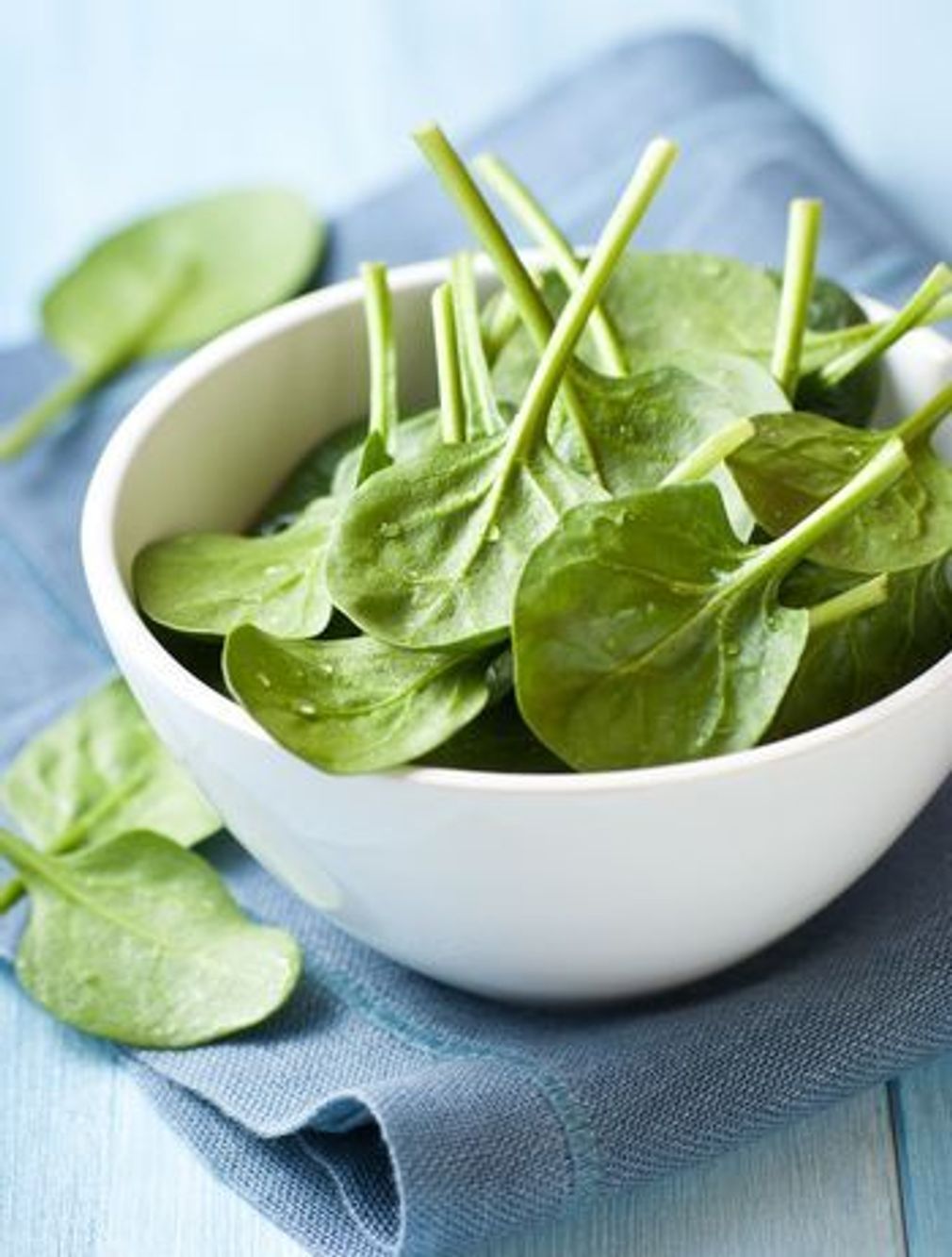
Comparing Lettuce Varieties: A Nutritional Breakdown
Not all lettuce is created equal when it comes to nutritional content. Different varieties offer varying levels of vitamins, minerals, and antioxidants. Understanding these differences can help you make informed choices about which greens to include in your diet.
Iceberg vs. Romaine: The Nutritional Face-off
While iceberg lettuce is often criticized for its low nutrient content, how does it actually compare to other varieties? Let’s look at some key nutrients in 100g of iceberg lettuce versus romaine:
- Vitamin A: Iceberg (502 IU) vs. Romaine (8710 IU)
- Vitamin C: Iceberg (2.8 mg) vs. Romaine (4 mg)
- Folate: Iceberg (29 mcg) vs. Romaine (136 mcg)
- Potassium: Iceberg (141 mg) vs. Romaine (247 mg)
As we can see, romaine lettuce consistently outperforms iceberg in terms of nutrient density. However, this doesn’t mean iceberg lettuce should be completely dismissed. Its high water content and crisp texture make it a refreshing addition to salads and sandwiches.

The Colorful Advantage of Red Leaf Lettuce
Red leaf lettuce stands out not only for its vibrant color but also for its impressive nutrient profile. It’s particularly high in vitamin K, providing 140 mcg per 100g serving. This nutrient is essential for blood clotting and bone health. Red leaf lettuce also boasts higher levels of iron compared to other varieties, making it an excellent choice for those looking to boost their iron intake through plant-based sources.
Maximizing Antioxidant Intake Through Salad Greens
Antioxidants play a crucial role in protecting our cells from damage caused by free radicals. Leafy greens are excellent sources of these protective compounds, but some varieties pack a more powerful antioxidant punch than others.
The Antioxidant Hierarchy of Lettuce
Based on antioxidant content, lettuce varieties can be ranked as follows (from highest to lowest):
- Red Leaf Lettuce
- Green Leaf Lettuce
- Romaine Lettuce
- Butterhead Lettuce
- Iceberg Lettuce
This ranking underscores the importance of incorporating a variety of greens into your diet. By mixing different types of lettuce in your salads, you can ensure a diverse intake of antioxidants and other beneficial compounds.
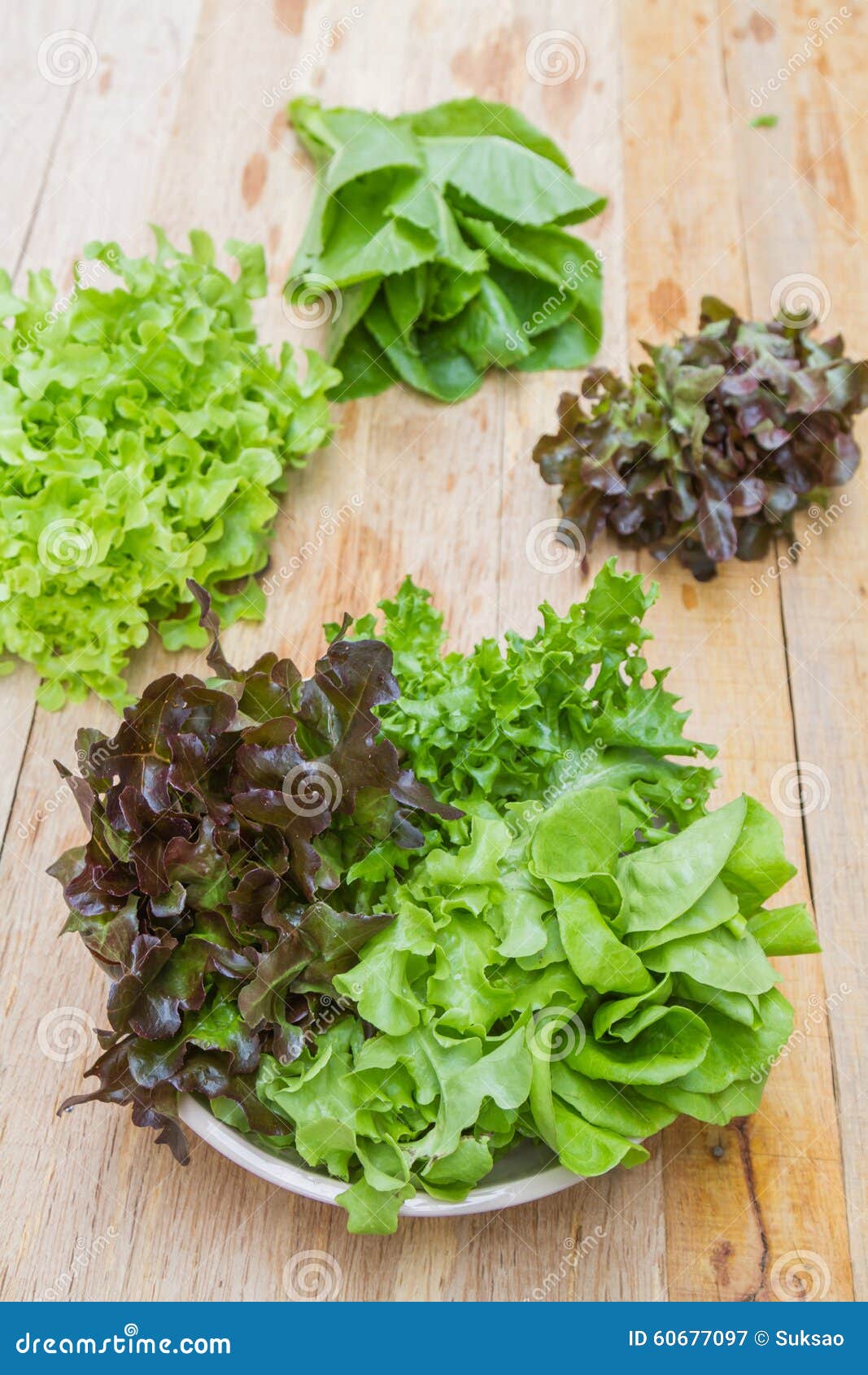
Beyond Lettuce: Exploring Other Nutritious Salad Greens
While lettuce is the most commonly consumed leafy green, there are many other options that can add both flavor and nutritional value to your salads. Expanding your salad repertoire can introduce new textures, flavors, and nutrients to your diet.
Spinach: The Nutrient-Dense Powerhouse
Spinach is renowned for its high nutrient content. It’s particularly rich in:
- Iron
- Calcium
- Magnesium
- Vitamin K
- Folate
Adding spinach to your salads can significantly boost their nutritional value. Its mild flavor makes it easy to incorporate into a variety of dishes, not just salads.
Arugula: The Peppery Nutrient Booster
Arugula, also known as rocket, offers a distinct peppery flavor and a host of health benefits. It’s particularly high in vitamin K and calcium, making it an excellent choice for bone health. Arugula also contains glucosinolates, compounds that may have cancer-fighting properties.
The Art of Creating Nutrient-Rich Salads
Creating a truly nutritious salad involves more than just tossing together a few leaves. By strategically combining different ingredients, you can maximize the nutritional value of your salads while also making them more satisfying and delicious.

Balancing Macronutrients in Your Salad
To create a well-rounded meal, consider incorporating:
- Protein: Grilled chicken, tofu, hard-boiled eggs, or legumes
- Healthy fats: Avocado, nuts, seeds, or olive oil-based dressings
- Complex carbohydrates: Quinoa, brown rice, or sweet potatoes
These additions not only boost the nutrient content of your salad but also help keep you feeling full and satisfied for longer.
Enhancing Nutrient Absorption
Did you know that some nutrients are better absorbed when consumed with certain foods? For instance, the iron in leafy greens is more readily absorbed when paired with vitamin C-rich foods. Try adding citrus fruits, bell peppers, or strawberries to your salads to enhance iron absorption.
Safe Handling and Storage of Salad Greens
While salad greens offer numerous health benefits, improper handling can lead to foodborne illness. Following safe handling practices is crucial to ensure you’re getting all the benefits without any risks.
Shopping and Transport Tips
When shopping for salad greens:
- Choose crisp, fresh-looking leaves without signs of wilting or browning
- Pack greens in separate plastic bags to prevent cross-contamination with other groceries, especially raw meats
- Refrigerate greens within two hours of purchase
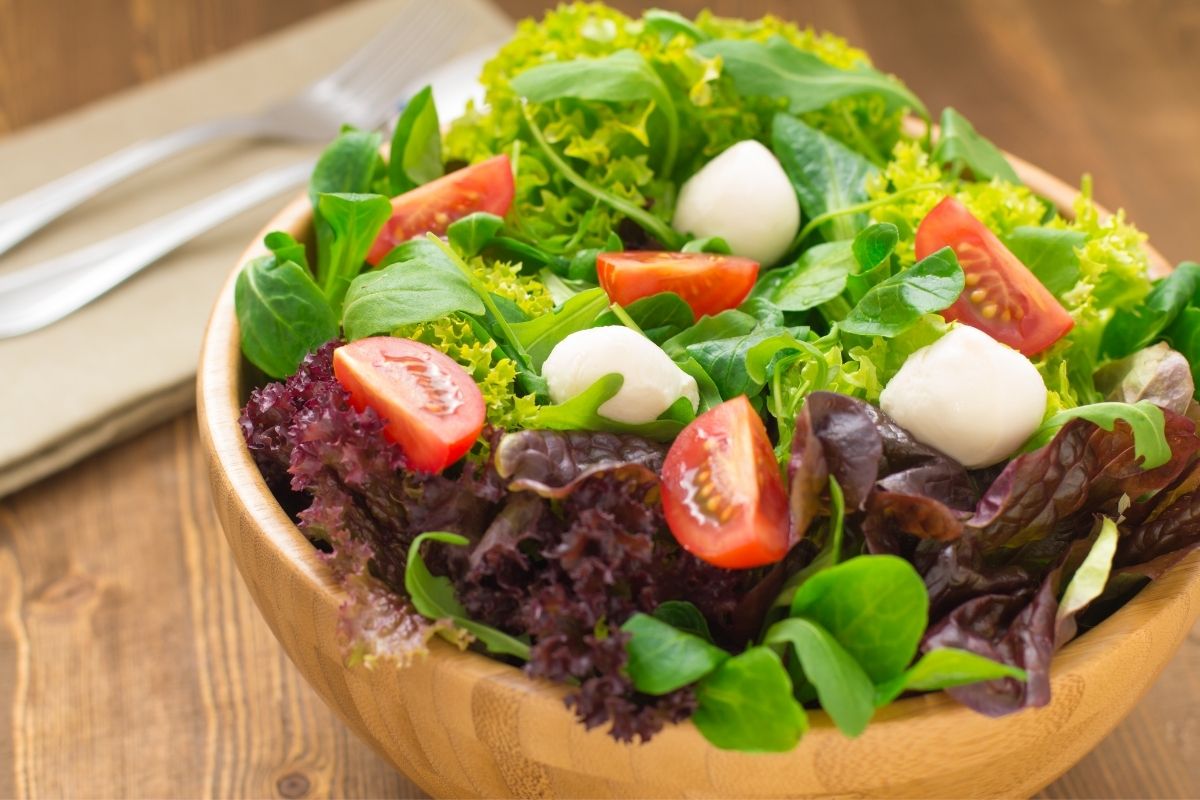
Proper Storage Techniques
To maximize the shelf life of your salad greens:
- Store at 35 to 40 degrees Fahrenheit
- Use a plastic bag or specialized lettuce keeper
- For bagged greens, observe “Use by” dates and consume within two days of opening
Effective Washing Methods
Proper washing is crucial to remove potential contaminants. Here’s how to do it effectively:
- Wash hands thoroughly before handling greens
- Rinse leaves under cold running water
- For stubborn dirt, soak leaves in a bowl of cold water for a few minutes
- Dry leaves thoroughly using a salad spinner or clean kitchen towels
Remember, even pre-washed greens should be rinsed before use as an extra precaution.
Growing Your Own Salad Greens: A Sustainable and Nutritious Option
Growing your own salad greens can be a rewarding experience that provides fresh, nutrient-rich produce right at your fingertips. It’s also a sustainable option that can help reduce your carbon footprint.
Benefits of Home-Grown Greens
Growing your own salad greens offers several advantages:
- Freshness: Harvest greens at their peak nutritional value
- Variety: Grow unique varieties not commonly found in stores
- Cost-effective: Save money on store-bought greens
- Environmental impact: Reduce packaging waste and transportation emissions

Getting Started with Salad Gardening
Salad greens are generally easy to grow, making them perfect for beginners. Here are some tips to get started:
- Choose a sunny spot or a well-lit indoor area
- Use well-draining soil rich in organic matter
- Start with easy-to-grow varieties like leaf lettuce or arugula
- Plant seeds in succession for a continuous harvest
- Water regularly to keep soil moist but not waterlogged
With minimal effort, you can enjoy a steady supply of fresh, nutritious greens right from your own garden or windowsill.
Innovative Ways to Incorporate More Greens into Your Diet
While salads are an obvious way to consume leafy greens, there are many other creative methods to increase your intake of these nutritious vegetables. Diversifying how you consume greens can help prevent boredom and ensure you’re getting a wide range of nutrients.
Beyond the Salad Bowl
Here are some innovative ways to incorporate more greens into your diet:
- Green smoothies: Blend spinach or kale with fruits for a nutrient-packed drink
- Wraps: Use large lettuce leaves as a low-carb alternative to tortillas
- Pesto: Make a nutrient-rich pesto using arugula or spinach instead of basil
- Sautéed greens: Lightly cook greens with garlic for a quick side dish
- Soups: Add chopped greens to your favorite soup recipes
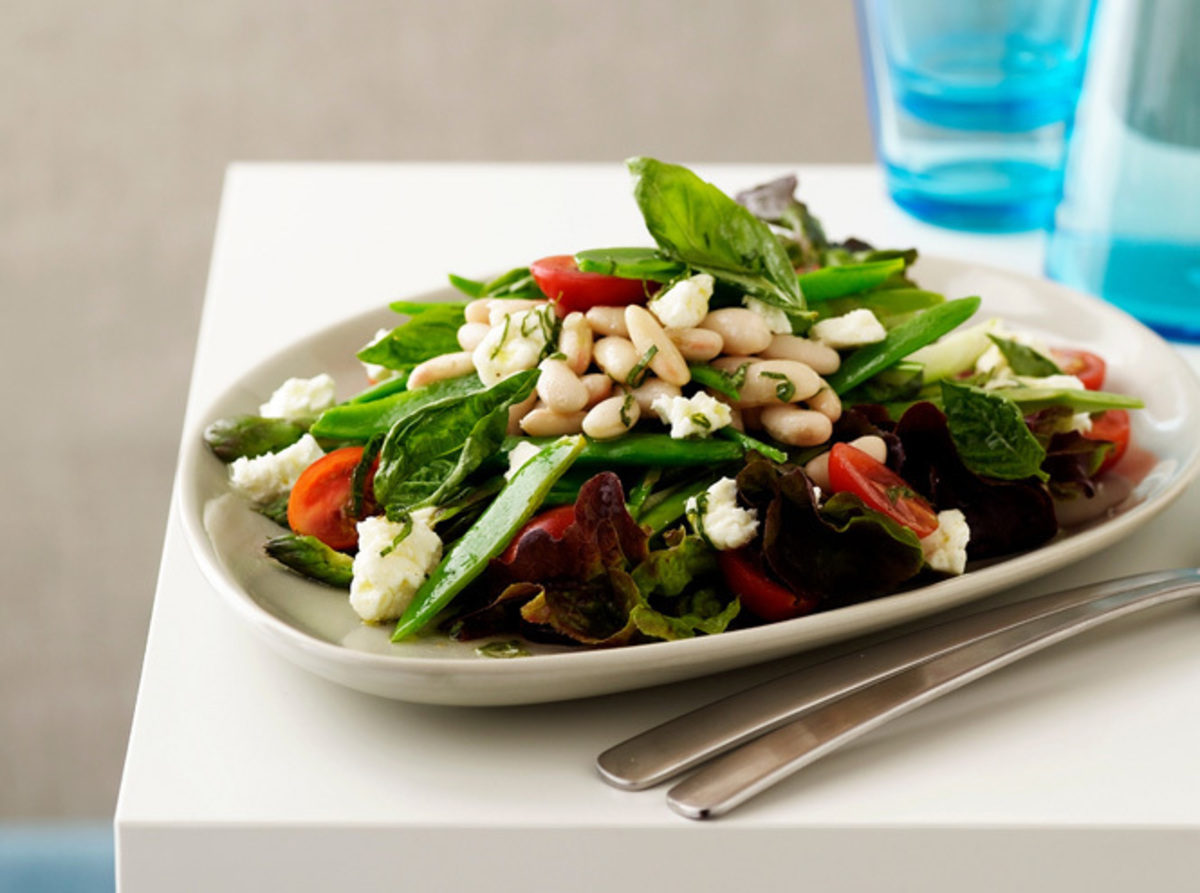
Greens for Every Meal
Incorporate greens into every meal of the day:
- Breakfast: Add spinach to omelets or scrambled eggs
- Lunch: Top sandwiches or wraps with a handful of mixed greens
- Dinner: Serve a side salad with your main course
- Snacks: Enjoy kale chips as a nutritious alternative to potato chips
By thinking creatively, you can significantly increase your daily intake of nutrient-rich greens.
Health Benefits and Safe Handling of Salad Greens – 9.373
Print this fact sheet
by M. Bunning and P. Kendall1 (6/12)
Quick Facts…
- Lettuce, spinach, and other salad greens are an important part of a healthful diet because they can be year-round sources of vitamin A, vitamin C, and other nutrients.
- Red and dark green leafy vegetables are generally higher in antioxidants, Vitamin B6, and other nutrients than lighter colored greens.
- It is important to store leafy greens at refrigerator temperatures and rinse well under running water before using.
- To reduce the risk of foodborne illness, observe “Use by” dates printed on bagged leafy vegetables and salad mixes and use within two days after opening.
- There are many flavorful and nutritious leafy greens available to consumers, especially if you choose to grow them from seed.
Benefits of Leafy Salad Greens
Leafy green vegetables are nutrient rich because leaves contain the light-catching, energy-converting machinery of plants. Salad greens contain Vitamin A, Vitamin C, beta-carotene, calcium, folate, fiber, and phytonutrients (see Table 1). Leafy vegetables are a good choice for a healthful diet because they do not contain cholesterol and are naturally low in calories and sodium. Many of the health benefits that leafy greens provide come from phytonutrients, unique compounds that provide protection for plants. These compounds are becoming recognized as part of a nutritious diet that promotes long-term health. Phytonutrients can act as antioxidants, which help to prevent chronic diseases like cancer and heart disease. Figure 1 shows the antioxidant content of different kinds of lettuce.
Salad greens contain Vitamin A, Vitamin C, beta-carotene, calcium, folate, fiber, and phytonutrients (see Table 1). Leafy vegetables are a good choice for a healthful diet because they do not contain cholesterol and are naturally low in calories and sodium. Many of the health benefits that leafy greens provide come from phytonutrients, unique compounds that provide protection for plants. These compounds are becoming recognized as part of a nutritious diet that promotes long-term health. Phytonutrients can act as antioxidants, which help to prevent chronic diseases like cancer and heart disease. Figure 1 shows the antioxidant content of different kinds of lettuce.
| Table 1. Nutrients in various lettuce types. | ||||||
| Nutrient* | Units | Lettuce Type | ||||
| Iceberg | Green Leaf | Red Leaf | Romaine | Butterhead | ||
| Vitamin A | IU | 502 | 7405 | 7492 | 8710 | 3312 |
| Vitamin B-6 | mg | . 042 042 | .09 | .100 | .074 | .082 |
| Vitamin C | mg | 2.8 | 9.2 | 3.7 | 4 | 3.7 |
| Vitamin K | mg | 24 | 126 | 140 | 103 | 102 |
| Folic Acid | mcg | 29 | 38 | 36 | 136 | 73 |
| Niacin | mg | .123 | .375 | .321 | .313 | .357 |
| Riboflavin | mg | . 025 025 | .080 | .077 | .067 | .062 |
| Iron | mg | .41 | .86 | 1.2 | .97 | 1.24 |
| Potassium | mg | 141 | 194 | 187 | 247 | 238 |
| ß-carotene | mcg | 229 | 4443 | 4495 | 5226 | 1987 |
| Lutein + Zeaxanthin | mcg | 277 | 1730 | 1724 | 2312 | 1223 |
| *100g fresh weight/USDA National Nutrient Database for Standard Reference, Release 24 (2011) Shaded cells indicate highest values.  | ||||||
Figure 1: Antioxidant content of some types of lettuce. |
Lettuce, the most commonly consumed leafy vegetable, provides about seven calories per 1 cup serving. When it comes to satisfying your appetite, it helps to eat foods high in volume but low in calories like lettuce. Lettuce is not typically a stand alone vegetable. It is usually served with an array of other vegetables and fruits in a salad and lettuce is often used to add a crunch to sandwiches, hold a variety of fillings as a wrap, or provide color as a garnish.
Lettuce and other leafy greens are generally cool season crops with short growing periods. This means gardeners can get several crops of salad greens in the time it takes other vegetables to reach final maturity. Because leafy greens can grow in a variety of locations, they are often available at local farmers’ markets. Home-gardeners can enjoy lettuce and other types of leafy vegetables planted in traditional rows, containers, or even as accents in flower gardens.
Types of Lettuce
Tips for Healthier Salads
|
Many types of lettuce are available in the grocery store and may be purchased by the head or as prepackaged salad greens. Different types have slightly different flavors.
Some have a mild flavor and crisp texture; others have a slightly bitter or tangy flavor that adds a nice bite to mixed salads. Salad greens are popular world-wide so many of the different types have become known by a variety of names. Information about different types of lettuce and salad greens is listed in Table 2.
Tips for Safe Handling and Storage of Salad Greens
- When shopping, pack fresh salad greens in plastic bags so they are kept separate from other groceries, especially raw meats and poultry.

- Refrigerate salad greens at 35 to 40 degrees F within two hours of purchasing. Store in a plastic bag or lettuce keeper.
- Always wash hands before preparing salads and make sure you are working with a clean cutting board.
- Wash lettuce just before using by running cold water over leaves. Leaves can be difficult to clean so separating the leaves and immersing them in a bowl of cold water for a few minutes helps loosen sand and dirt. A bowl is a much better choice than a sink, which can harbor bacteria and be difficult to clean. Presoaking lettuce for 5 minutes in dilute vinegar-water (1/2 cup distilled white vinegar per 2 cups water), followed by a clean water rinse, has been shown to reduce bacterial contamination but may affect texture and taste. A vinegar rinse will not eliminate all microorganisms but may lower the level of possible contamination. After washing, blot dry with paper towels or use a salad spinner to remove excess moisture.
- Because lettuce and other salad greens are very perishable, they should be used within one week after purchase.

- Bagged salads can be convenient but added processing steps like cutting and mixing can increase the likelihood of contamination with microorganisms. To reduce the risk of foodborne illness with bagged salads keep them refrigerated at 35 to 40 degrees F, observe “Use By” dates marked on the package, and rinse well before eating, removing any damaged or spoiled leaves.
| Table 2. Commonly available salad greens. | ||
| Name | Characteristics | |
| Commonly available types of lettuce | ||
| Green Leaf (loose leaf or salad bowl) | Green leaf lettuce forms a loose bunch and is known for its mild flavor. | |
| Red Leaf (lollo rosso) | Red leaf lettuce makes a colorful addition to salads and sandwiches. Studies have shown red lettuce to be high in antioxidants (Figure 1). Red leaf lettuce is more perishable than head types and has a shorter shelf life. Red leaf lettuce is more perishable than head types and has a shorter shelf life. | |
| Romaine (cos) | Romaine lettuce, a Caesar salad favorite, has elongated, sturdy leaves. Romaine stores well and its coarse texture holds up well in salads. | |
| Butterhead (bibb or Boston) | This lettuce has tender, rounded leaves with a mild, buttery flavor that form into a soft head. It is often sold in a clam shell to protect its tender leaves. | |
| Iceberg (head or crisphead) | Iceberg is prized for its crispness and sweet flavor. It can be stored longer than leaf types of lettuce. | |
| Batavia (French Batavia) | Batavia lettuce is a subtype of crisphead lettuce and is similar to iceberg except it is smaller, less dense and more flavorful. Batavia lettuce is popular in Europe and may be found at farmers’ markets or grown in home gardens. Batavia lettuce is popular in Europe and may be found at farmers’ markets or grown in home gardens. | |
| Salad greens that may be part of a salad mix or sold separately | ||
| Arugula (rocket) | Arugula belongs to the mustard family and has a distinctive peppery flavor. The young fresh leaves are pungent but pleasant and often available in grocery stores. | |
| Baby Bok Choy | These tender young leaves have a crunchy, celery-like texture and a mild, refreshing flavor. | |
| Belgian Endive (witloof chicory) | Belgian endive has a dense, cigar-shaped head of crunchy leaves that are pale yellow because it is grown under cover. It is often used in hors d’œuvres, but can be added to salads. | |
| Curly Endive (frisée) | These attractive, yellowish-green, frilly leaves have a strong, pleasantly bitter taste. | |
| Dandelion greens | These relatives of lettuce are available in some grocery stores. If you collect them yourself, choose young plants that have not been exposed to pesticides. | |
| Escarole | The taste of this broad-leafed endive varies from mild in the lighter-colored portions to bitter in the darker green leaves. | |
| Mache (corn salad, lamb’s lettuce) | Mache has an unusual but pleasant, nutty flavor. Because its leaves are very delicate, it’s usually sold separately rather than included in salad mixes. | |
| Mesclun | Mesclun is French for a mixture of tender young lettuces (baby greens) and other salad greens. The traditional mesclun mix includes chervil, arugula, lettuce and endive. | |
| Mizuna (oriental greens) | Mizuna has deeply cut, fringed leaves with a tangy flavor. | |
| Radicchio (red chicory) | Radicchio is a type of chicory that has dark red leaves with white veins that form into a small, loosely wrapped, cabbage-like head. Radicchio is known for its bittersweet taste. | |
| Spinach | Young spinach leaves are nutritious and flavorful, alone or mixed with other salad greens. Savoy types of spinach have more wrinkled and curly leaves than smooth types. | |
| Watercress | These spicy, robust leaves are a pleasing addition to salads and they are also good on sandwiches. | |
Resources & References
Bunning, M. 2007. Evaluation of Antioxidant and Sensory Properties of Multiple Cultivars of Colorado-grown Lettuce (Lactuca sativa L.). PhD Dissertation. Department of Food Science & Human Nutrition, Colorado State University, Fort Collins, CO.
Chang, J. and Fang, T. 2007. Survival of Escherichia coli O157:H7 and Salmonella enterica serovars Typhimurium in iceberg lettuce and the antimicrobial effect of rice vinegar against E. coli O157:H7. Food Microbiology 24: 745-751.
Produce Safety, U. S. Food and Drug Administration, Center for Applied Food Safety & Applied Nutrition. Available online at: http://www.cfsan.fda.gov.
U.S. Department of Agriculture, Agricultural Research Service. 2011. USDA National Nutrient Database for Standard Reference, Release 24. Nutrient Data Laboratory Home Page, http://www.ars.usda.gov/ba/bhnrc/ndl
*M. Bunning, Colorado State University Extension food safety specialist and assistant professor, department of food science and human nutrition; P. Kendall, Ph.D., R.D., Colorado State University, associate dean of research, food science and human nutrition.6/07.
Colorado State University, U.S. Department of Agriculture, and Colorado counties cooperating.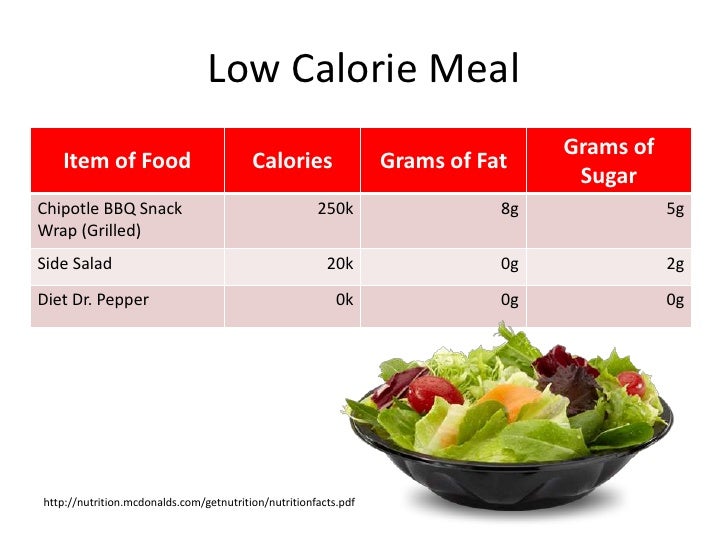 CSU Extension programs are available to all without discrimination. No endorsement of products mentioned is intended nor is criticism implied of products not mentioned.
CSU Extension programs are available to all without discrimination. No endorsement of products mentioned is intended nor is criticism implied of products not mentioned.
Go to top of this page.
Salads and nutrients: MedlinePlus Medical Encyclopedia
URL of this page: //medlineplus.gov/ency/article/002132.htm
To use the sharing features on this page, please enable JavaScript.
Salads can be a good way to get your important vitamins, minerals, and fiber. However, not all salads are healthy or nutritious. It depends on what is in the salad. It is OK to add small amounts of dressing and toppings, however, if you overdo it with high-fat or high-sugar add-ins, your salad may cause you to exceed your daily calorie needs and contribute to weight gain.
Prepare salads with colorful vegetables. If you have plenty of fresh vegetables in the salad, then you are getting healthy, disease-fighting nutrients.
Be mindful of the extra items you add to your vegetable salads, which may be high in saturated fat, sodium, or sugar.
- You want to include some fat in your salad. Mixing vinegar with olive oil or another vegetable oil is a good base for homemade dressings. You can also add nuts, seeds, and avocado to include healthy fats. This will help your body to make the most of the fat-soluble vitamins (A,D, E, and K).
- Use salad dressing or added fats in moderation. Prepared salad dressings can be high in fat and sodium and are often a hidden source of extra sugar. Large amounts of prepared salad dressing or toppings such as cheese, dried fruits, and croutons can turn a healthy salad into a very high-calorie meal.
- Chunks of cheese, croutons, bacon bits, nuts, and seeds can increase the amount of sodium, fat, and calories in a salad. Try to choose only one or two of these items to add to your colorful veggies.
- At the salad bar, avoid add-ons such as coleslaw, potato salad, and creamy fruit salads, which can increase calories and fat.

- Try to use a darker lettuce. Light green Iceberg has fiber but not as many nutrients as dark greens such as romaine, kale, or spinach.
- Add variety to your salad with high-fiber items such as legumes (beans), raw vegetables, and fresh fruit. Dried fruit is also a high-fiber add-in, but use this in moderation, as it is also high in sugar.
- Include a protein in your salads to help make them a filling meal. Examples include beans, grilled chicken breast, canned salmon, or hard-boiled eggs.
- Salad nutrients
Hall JE, Hall ME. Dietary balances; regulation of feeding; obesity and starvation; vitamins and minerals. In: Hall JE, Hall ME, eds. Guyton and Hall Textbook of Medical Physiology. 14th ed. Philadelphia, PA: Elsevier; 2021:chap 72.
Mason JB, Booth SL. Vitamins, trace minerals, and other micronutrients. In: Goldman L, Schafer AI, eds. Goldman-Cecil Medicine. 26th ed. Philadelphia, PA: Elsevier; 2020:chap 205.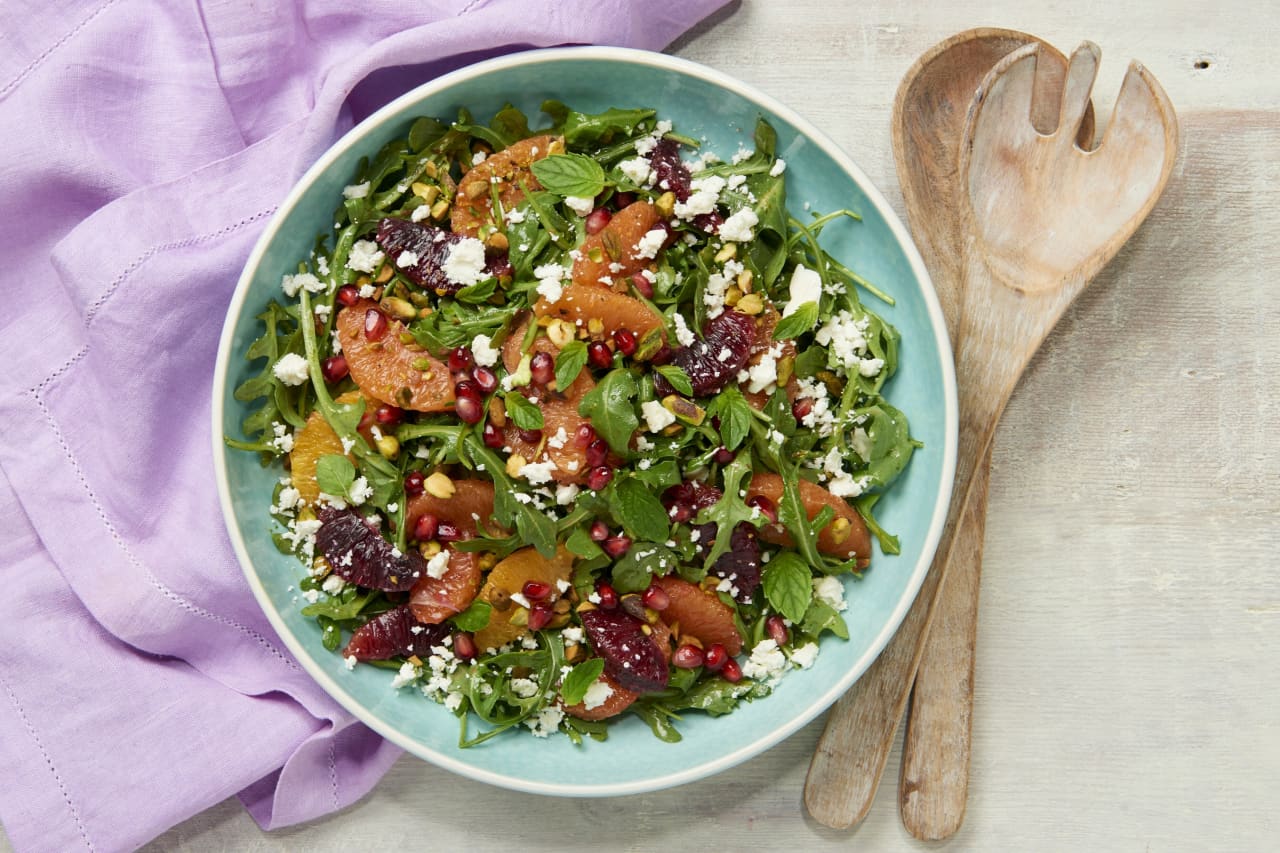
Updated by: Stefania Manetti, RD/N, CDCES, RYT200, My Vita Sana LLC – Nourish and heal through food, San Jose, CA. Review provided by VeriMed Healthcare Network. Also reviewed by David C. Dugdale, MD, Medical Director, Brenda Conaway, Editorial Director, and the A.D.A.M. Editorial team.
Salad – calories, useful properties, benefits and harms, description
12
Proteins, g:
1.2
Fats, g:
0.3
Carbohydrates, g:
1.3
Lettuce refers to a one- or two-year-old horticultural crop of the family Compositae . Information that lettuce was eaten is found in documents describing the existence of the ancient Roman Empire, until that time lettuce was grown for the sake of seeds, from which oil was squeezed out. The exact geographical place of origin of the first types of lettuce has not been historically established.
Lettuce has many varieties, the most common, leaf lettuce, has long tender shoots in the form of oak leaves, light green (light green) color. Lettuce leaves are juicy, crunchy, with a fresh smell, can vary in shape and quantity, located on one root or head.
Lettuce leaves are juicy, crunchy, with a fresh smell, can vary in shape and quantity, located on one root or head.
Lettuce calories
Lettuce has 12 calories per 100 grams of product.
Composition and useful properties of lettuce
Lettuce has a rich vitamin and mineral composition, which contains: B and C vitamins, as well as potassium, calcium, sulfur, iodine, phosphorus. The product contains coarse dietary fiber, which improves digestion, normalizes intestinal motility, fills the volume of the stomach and, without being digested, is excreted, collecting mucus and toxins from the intestinal walls. Substance lactucin , belonging to the group of alkaloids, not only gives the salad a bitter taste, but also actively reduces the level of cholesterol in the blood. Eating lettuce leaves will help improve the condition of hair and nails, has a beneficial effect on the skin, improves memory, vision and is a preventive measure against the onset of Alzheimer’s disease.
Despite the beneficial properties of lettuce, it can be harmful to the body.
Harm of lettuce
The reasons for reducing the consumption of lettuce are the presence of diseases such as gout, colitis and enterocolitis, urolithiasis, hepatitis. Due to the high content of oxalic acid, the use of the product in case of kidney disease should be limited.
Slimming salad
Salad is a unique product for weight watchers. After eating a large bowl of lettuce leaves, we get a full stomach and a minimum of calories (calorizator). Of course, a salad in its pure form does not give a feeling of fullness, so it is combined with other vegetables or protein foods. You can, without adhering to special diets, consume a serving of lettuce leaves daily for lunch or dinner, thereby ensuring regular bowel movements, healthy peristalsis and burning fat accumulations. Babushkin’s diet or, for example, French for 13 days, recommend the daily use of lettuce in the diet.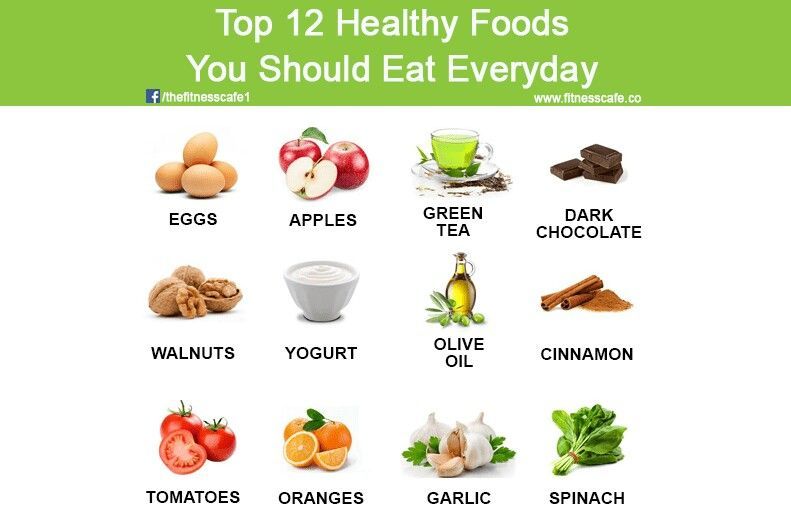
Selecting and storing lettuce
When choosing a lettuce, you need to pay attention to its appearance – the juiciness and greenness of the leaves, their elasticity, integrity and the absence of rot, dark spots. Often lettuce is sold with roots or in pots, such a product retains freshness longer, but in any case, a visual inspection should be carried out carefully.
Salad in cooking
The name of the product speaks for itself, most often lettuce is used in salads. Even if it is a mixture of different types of lettuce leaves and an elementary dressing from any aromatic oil – olive, nut or any, to taste – sea salt and freshly ground pepper, then this salad will be a very tasty and healthy dish (kalorizator). Lettuce goes well with shrimp, mushrooms, nuts, eggs, dairy products, baked chicken breast or cold roast beef. The traditional use of elegant lettuce leaves is to serve and decorate cold appetizers, salads and various dishes, lettuce is a very “correct” side dish for meat dishes, contributing to the speedy digestion of meat.
For more information about leaf lettuce, see the video “Leaf lettuce – benefits and harms” of the TV show “About the most important thing.”
Specially for Calorizator.ru
Copying this article in whole or in part is prohibited.
Fresh vegetable salad recipe. Calorie, chemical composition and nutritional value.
| lettuce | 100.0 (grams) |
| cucumber | 2.0 (piece) |
| radish | 7.0 (piece) |
| carrots | 1. 0 (piece) 0 (piece) |
| potatoes | 3.0 (piece) |
| tomatoes | 2.0 (piece) |
| green onion | 50.0 (grams) |
| sour cream | 150.0 (grams) |
| vinegar | 20.0 (grams) |
| powdered sugar | 10.0 (grams) |
Cut washed and dried green lettuce, put a slide in a salad bowl. Place sliced carrots, tomatoes, potatoes, radishes, cucumbers, green onions around the salad. Place rounds of hard-boiled eggs in the center of the lettuce pile. Prepare the sauce from sour cream, vinegar and sugar. Lightly salt the salad before serving. Serve the sauce separately in a gravy boat. Prepare the sauce with vinegar and sugar. Lightly salt the salad before serving. Serve the sauce separately in a gravy boat.
Place sliced carrots, tomatoes, potatoes, radishes, cucumbers, green onions around the salad. Place rounds of hard-boiled eggs in the center of the lettuce pile. Prepare the sauce from sour cream, vinegar and sugar. Lightly salt the salad before serving. Serve the sauce separately in a gravy boat. Prepare the sauce with vinegar and sugar. Lightly salt the salad before serving. Serve the sauce separately in a gravy boat.
Use the recipe calculator in the My Healthy Diet app to create your own recipe for vitamin and mineral losses.
Chemistry and Nutrition Analysis
Nutrition and Chemistry
Fresh Vegetable Salad .
The table shows the nutritional content (calories, proteins, fats, carbohydrates, vitamins and minerals) per 100 grams of the edible portion.
| Nutrient | Number | Norm** | % of the norm in 100 g | % of the norm in 100 kcal | 100% normal |
| Calories | 77. 5 kcal 5 kcal | 1684 kcal | 4.6% | 5.9% | 2173 g |
| Proteins | 1.6 g | 76 g | 2.1% | 2.7% | 4750 g |
| Fats | 4.4 g | 56 g | 7.9% | 10.2% | 1273 g |
| Carbohydrates | 8.3 g | 219 g | 3. 8% 8% | 4.9% | 2639 g |
| Organic acids | 0.2 g | ~ | |||
| Dietary fiber | 1.3 g | 20 g | 6.5% | 8.4% | 1538 g |
| Water | 94.5 g | 2273 g | 4.2% | 5.4% | 2405 g |
| Ash | 0. 8 g 8 g | ~ | |||
| Vitamins | |||||
| Vitamin A RE | 1100 mcg | 900 mcg | 122.2% | 157.7% | 82 g |
| Retinol | 1.1 mg | ~ | |||
| Vitamin B1, thiamine | 0. 06 mg 06 mg | 1.5 mg | 4% | 5.2% | 2500 g |
| Vitamin B2, riboflavin | 0.07 mg | 1.8 mg | 3.9% | 5% | 2571 g |
| Vitamin B4, choline | 17.3 mg | 500 mg | 3.5% | 4.5% | 2890 g |
| Vitamin B5, pantothenic | 0.2 mg | 5 mg | 4% | 5. 2% 2% | 2500 g |
| Vitamin B6, pyridoxine | 0.2 mg | 2 mg | 10% | 12.9% | 1000 g |
| Vitamin B9, folates | 12.7 mcg | 400 mcg | 3.2% | 4.1% | 3150 g |
| Vitamin B12, cobalamin | 0.05 mcg | 3 mcg | 1.7% | 2.2% | 6000 g |
| Vitamin C, ascorbic | 16. 3 mg 3 mg | 90 mg | 18.1% | 23.4% | 552 g |
| Vitamin D, calciferol | 0.02 mcg | 10 mcg | 0.2% | 0.3% | 50000 g |
| Vitamin E, alpha tocopherol, TE | 0.3 mg | 15 mg | 2% | 2.6% | 5000 g |
| Vitamin H, Biotin | 1 mcg | 50 mcg | 2% | 2. 6% 6% | 5000 g |
| Vitamin PP, NE | 0.8656 mg | 20 mg | 4.3% | 5.5% | 2311 g |
| Niacin | 0.6 mg | ~ | |||
| Macronutrients | |||||
| Potassium, K | 340.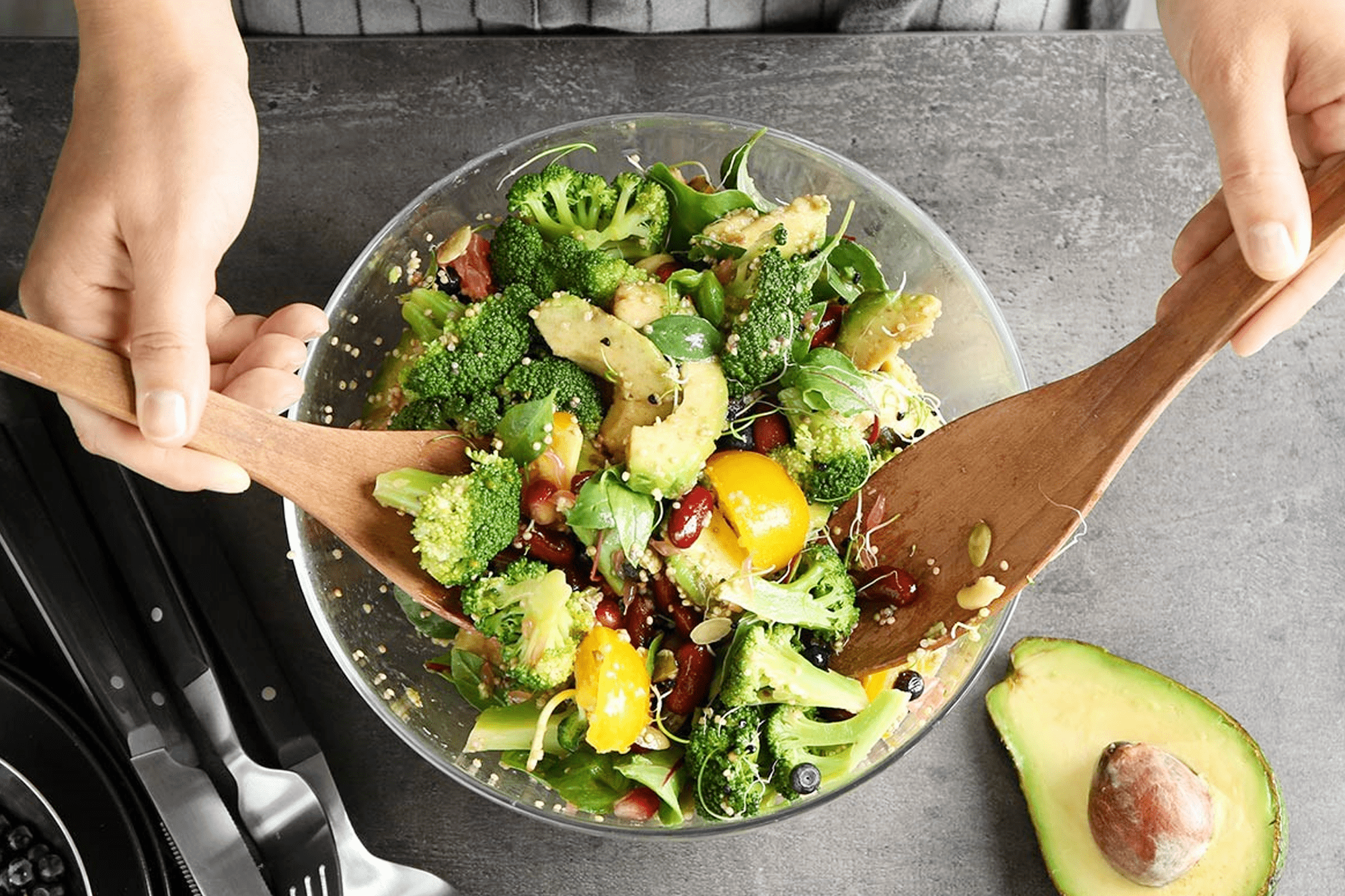 9 mg 9 mg | 2500 mg | 13.6% | 17.5% | 733 g |
| Calcium Ca | 42.3 mg | 1000 mg | 4.2% | 5.4% | 2364 g |
| Magnesium, Mg | 22.6 mg | 400 mg | 5.7% | 7.4% | 1770 |
| Sodium, Na | 18.9 mg | 1300 mg | 1. 5% 5% | 1.9% | 6878 g |
| Sulfur, S | 13.7 mg | 1000 mg | 1.4% | 1.8% | 7299 g |
| Phosphorus, P | 51.8 mg | 800 mg | 6.5% | 8.4% | 1544 g |
| Chlorine, Cl | 58.7 mg | 2300 mg | 2.6% | 3.4% | 3918 g |
| Trace elements | |||||
| Aluminium, Al | 404. 3 mcg 3 mcg | ~ | |||
| Bor, B | 91.6 mcg | ~ | |||
| Vanadium V | 98.1 mcg | ~ | |||
| Iron, Fe | 1 mg | 18 mg | 5.6% | 7.2% | 1800 g |
| Iodine, I | 5. 8 mcg 8 mcg | 150 mcg | 3.9% | 5% | 2586 g |
| Cobalt, Co | 4 mcg | 10 mcg | 40% | 51.6% | 250 g |
| Lithium, Li | 29.2 mcg | ~ | |||
| Manganese, Mn | 0.1831 mg | 2 mg | 9. 2% 2% | 11.9% | 1092 g |
| Copper, Cu | 127.8 mcg | 1000 mcg | 12.8% | 16.5% | 782 g |
| Molybdenum, Mo | 7.3 mcg | 70 mcg | 10.4% | 13.4% | 959 g |
| Nickel, Ni | 7.2 mcg | ~ | |||
| Rubidium, Rb | 175 mcg | ~ | |||
| Selenium, Se | 0. 04 mcg 04 mcg | 55 mcg | 0.1% | 0.1% | 137500 g |
| Fluorine, F | 28.7 mcg | 4000 mcg | 0.7% | 0.9% | 13937 g |
| Chrome, Cr | 7.5 mcg | 50 mcg | 15% | 19.4% | 667 g |
| Zinc, Zn | 0.309 mg | 12 mg | 2.:max_bytes(150000):strip_icc()/spring-mix_annotated-77dfb88c2ab148b381a25221dfe7c910.jpg) 6% 6% | 3.4% | 3883 g |
| Digestible carbohydrates | |||||
| Starches and dextrins | 4 g | ~ | |||
| Mono- and disaccharides (sugars) | 2.7 g | ~ |
Energy value Fresh vegetable salad is 77. 5 kcal.
5 kcal.
Main source: Internet. More.
** This table shows the average norms of vitamins and minerals for an adult. If you want to know the norms based on your gender, age and other factors, then use the application
“My Healthy Diet”
Recipe calculator
Nutritional value per 100 g
| Content per serving | % of RSP | ||
| Calories | 77.5 kcal | -% | |
| Proteins | 1.6 g | -% | |
| Fats | 4.4 g | -% | |
| Carbohydrates | 8. 3 g 3 g | -% | |
| Dietary fiber | 1.3 g | -% | |
| Water | 94.5 g | -% | |
Go to the food diary
Vitamins and minerals
Most foods cannot contain the full range of vitamins and minerals. Therefore, it is important to eat a variety of foods to meet the body’s needs for vitamins and minerals.
Find out the content of vitamins and minerals in your menu
Analysis of the calorie content of the product
The ratio of proteins, fats and carbohydrates:
Find out your energy balance for the whole day
Knowing the contribution of proteins, fats and carbohydrates to caloric content, you can understand how a product or diet meets the standards of a healthy diet or the requirements of a particular diet. For example, the US and Russian Departments of Health recommend 10-12% of calories from protein, 30% from fat, and 58-60% from carbohydrates. The Atkins diet recommends low carbohydrate intake, although other diets focus on low fat intake.
For example, the US and Russian Departments of Health recommend 10-12% of calories from protein, 30% from fat, and 58-60% from carbohydrates. The Atkins diet recommends low carbohydrate intake, although other diets focus on low fat intake.
Calculate your norms
If more energy is expended than is supplied, then the body begins to use fat reserves, and body weight decreases.
Get recommendations
Get more information and make it happen with our free online course.
Learn online weight loss course
Try filling out a food diary right now without registering.
Complete the food diary
Find out your additional calorie expenditure for training and get detailed recommendations absolutely free.
Complete the training diary
Deadline for achieving the goal
Fresh vegetable salad is rich in vitamins and minerals such as:
vitamin A – 122.2%, vitamin C – 18.1%, potassium – 13.6%, cobalt – 40%, copper – 12.8%, chromium – 15%
- Vitamin A is responsible for normal development, reproductive function, skin and eye health, and immune support.
- Vitamin C is involved in redox reactions, the functioning of the immune system, promotes the absorption of iron. Deficiency leads to friable and bleeding gums, nosebleeds due to increased permeability and fragility of blood capillaries.
- Potassium is the main intracellular ion involved in the regulation of water, acid and electrolyte balance, is involved in the processes of nerve impulses, pressure regulation.
- Cobalt is part of vitamin B12. Activates the enzymes of fatty acid metabolism and folic acid metabolism.

- Copper is part of the enzymes that have redox activity and are involved in the metabolism of iron, stimulates the absorption of proteins and carbohydrates. Participates in the processes of providing tissues of the human body with oxygen. Deficiency is manifested by violations of the formation of the cardiovascular system and skeleton, the development of connective tissue dysplasia.
- Chromium is involved in the regulation of blood glucose levels, enhancing the action of insulin. Deficiency leads to decreased glucose tolerance.
You can find a complete guide to the healthiest foods in the My Healthy Diet app.
- Salad (lettuce) 16 kcal
- Ground cucumber 14 kcal
- Radish 20 kcal
- Carrot 35 kcal
- Potato 77 kcal
- Tomato (tomato), ground 24 kcal
- Green onion (feather) 20 kcal
- Sour cream 15% fat 162 kcal
- Vinegar 9% 11 kcal
- Powdered sugar 399 kcal




